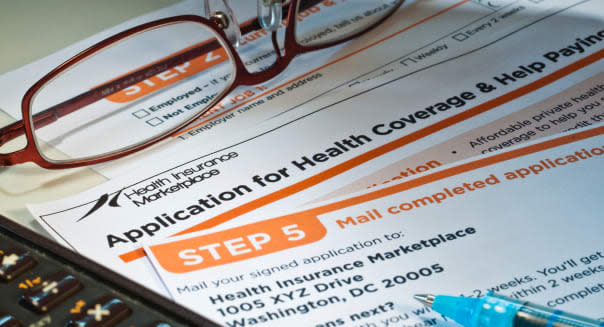Health Insurance Exchanges Open Tuesday (and Not Much Will Happen)

After years of rumbling and grumbling, debate and delay, D-Day is almost upon us. Despite the best efforts of its opponents -- and their continuing attempts to defund it -- the Affordable Care Act, aka Obamacare, will reach a major milestone on Tuesday: Its health insurance exchanges will open.
Do you hear that rumble of distant guns, the thunderous hoof-beats of the four horsemen of the health care apocalypse? No? Well, one reason may be that, despite the dire warnings of health care reform's enemies, not a whole lot will change on Tuesday. And, as we've previously pointed out, portions of the program have been coming on line for the past year.
Indeed, most people's health care situation won't change at all. People who have Medicaid, Medicare, or workplace-provided health insurance on Monday will still have it on Wednesday. And, if you're uninsured, the health care police aren't going to show up on Tuesday afternoon with a warrant for your arrest. The much-maligned mandate requiring people to buy their own insurance won't kick in until January 2014 -- and the actual deadline for buying 2014 coverage won't arrive until March 31.
So how many people will actually buy insurance on Tuesday? Chances are, not many: According to a recent article in Washington Post's Wonkblog, California's health exchange administrator, Peter Lee, estimates that almost nobody will sign up on the first day. He anticipates, rather, that people will start to explore the public and private marketplaces, consider their options and take their time. Eventually, he predicts, between 800,000 and 1.3 million people Californians will use the state's exchange to buy their coverage.
%VIRTUAL-article-sponsoredlinks%All told, consumers will now have three options for buying healthcare: They can get it through their employers, through government-run marketplaces, or through a private exchange. The public exchanges will be like state-run online stores where people will be able to comparison-shop for their health insurance. So far, 16 states have agreed to run their own; in the other 34 states, the exchanges will be run by the federal government. For those who prefer the private marketplace, there will also be privately-run exchanges, like eHealth.
These exchanges will offer a wide array of insurance plans, with a variety of options and prices. The White House estimates that the average monthly insurance rate for a single person will be $328 before tax credits and subsidies. On the lowest-cost plan, prices will vary from $114 per month for a 27-year-old in Arizona to $286 per month for a 27-year-old in Wyoming. The White House's webpage gives a feel for what the price ranges will look like.
If those prices seem high, it's worth remembering that subsidies will take a big bite out of the bottom line for many Americans. According to some estimates, in fact, 60 percent of uninsured people will have to pay less than $100 a month for health insurance.
The currently uninsured aren't the only ones who will benefit from Obamacare. From the ending of pre-existing condition restrictions to the fast-tracking of generic drugs, several aspects of the plan are already making health care more reasonable for the average American. And, as Business Insider recently noted, people with HSA's, or medical savings accounts, will be able to contribute even more pre-tax income to them -- a handy way of cutting out a fraction of your health care budget.
So, set the hype aside and relax: Very few things will change on Tuesday. In the coming months, your health expenditures are likely to get a lot more transparent -- and, in many cases, a lot less expensive. Of course, as the President recently joked, by the time that happens, we'll probably have stopped calling it Obamacare.
Bruce Watson is DailyFinance's Savings Editor. You can reach him by e-mail at bruce.watson@teamaol.com, or follow him on Twitter at @bruce1971.

